Biography
Nguyen Tien Chung was born on August 8th, 1914 in Uoc Le village, Tan Uoc commune, Thanh Oai district, Hanoi. He was a graduate of class XI (1936 – 1941) of the Indochina Fine Arts College and he became a teacher at this college in 1946. Over the period between 1947 and 1953, he joined the Viet Minh movement in Hanoi. He was a Member of the Executive Committee of the Vietnam Fatherland Front in Hanoi (1954), teacher at Vietnam University of Fine Arts (1955 – 1964), Member of the Executive Committee of Vietnam Fine Arts Association (Phase I, 1957 – 1968), Member of the Arts Council of Hanoi Fine Arts Association (1966 – 1976). He passed away on March 5th, 1976 at the age of 62.
Artworks
Nguyen Tien Chung’s paintings usually depicted Vietnamese famers, young women, soldiers and workers who were imbued with national identity. Some of his artworks exerted a profound influence on Vietnamese fine arts during the period prior to 1975.
His outstanding artworks:
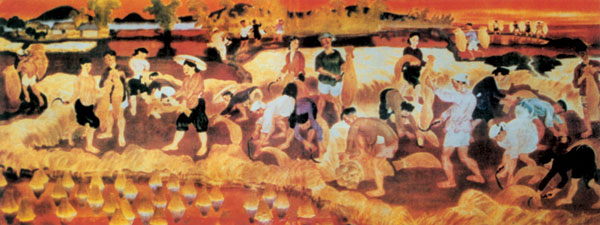
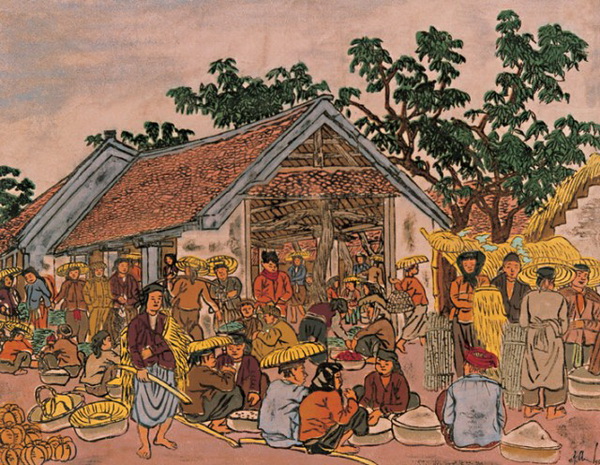
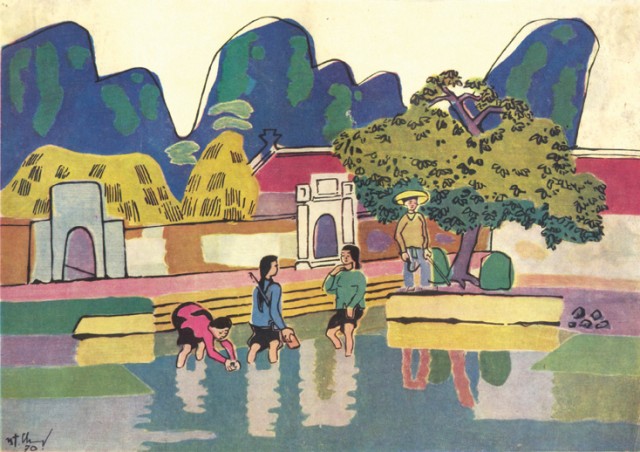
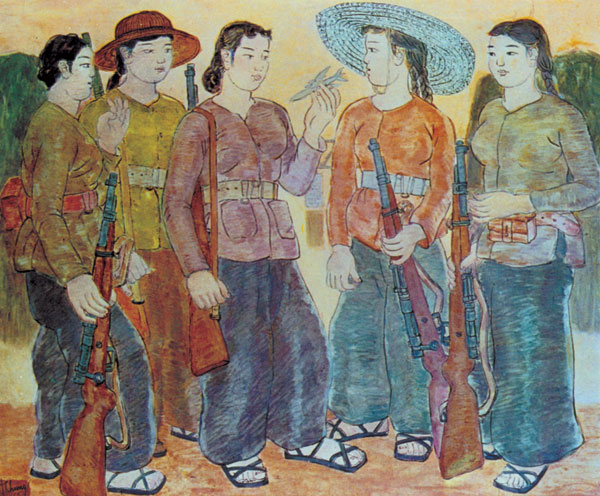
Remark
Over the period prior to 1975, Nguyen Tien Chung had two paintings provoking much controversy. The painting “Threshing rice at night” (1963) which portrayed a Vietnamese hard-working farmer was considered as a smear on the peasantry by an authority. However, it was on exhibition in the Soviet Union afterwards.
The painting “Harvest” (1958) which was his largest lacquer painting was executed after the revolution. It was displayed on Vietnam Fine Arts exhibition (1968) but it was also criticized for the depiction of famers. Therefore, Nguyen Tien Chung just won the third prize and the museum did not purchase his painting. When he came back home, he asked his daughter to throw the painting to the pond, but at the same time a guest (Duc Minh) visited him and changed his wooden furniture for the painting. In 1976, Nguyen Tien Chung was sick and he had to sell the wooden furniture for 2 thousand VND. After his death, his collection was not remained intact and the painting “Harvest” belonged to the collector Danh An.
Two Controversial paintings of Nguyen Tien Chung
He was in the same class as the painters Nguyen Van Ty, Hoang Tich Chu, Bui Trang Chuoc. Many artists retold the story of controversial paintings to remember a marked period of Vietnamese Fine Arts in the past.
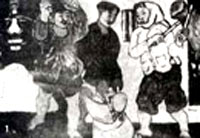
From 1963 to 1964, Nguyen Tien Chung worked on the painting Threshing Rice At Night. Despite being a small lacquer painting, it represented a dramatic shift to his artistic concept. He usually conducted in-depth research on rural life including even small details such as cow barns, kitchen corners and baskets. Before painting, he adjusted the colors and the images; unlike other artists such as Nguyen Sang and Bui Xuan Phai, he did not paint continuously. Especially, he was fascinated by harvest time so it became the theme of many of his paintings. As regards Threshing Rice At Night, its layout included only three characters and it emphasized on the middle person who threw a sheaf of rice to the millstone. The woman on the right shouldered another sheaf of rice. The woman on the left tried to put her sheaf of rice on the head and she prepared to throw it to the millstone. An array of light was generated to show a contrast with the other one from the women. Thanks to his arrangement, the women had stocky builds in harmony with the working landscape that made his painting vivid, spontaneous and cozy.
Nevertheless, when the painting was on exhibition, an authority said that: “The farmers in the painting are hefty with big hands and big legs that worsened the image of labors under Socialism”. There were strong arguments for and against Nguyen Tien Chung among the artists. Some people supposed that the painting was a creative work following “Fauvism” (a French style of painting in which people and objects are represented in a spontaneous and strong way) and it cogently expressed the characteristics of Vietnamese farmers. Others thought that Nguyen Tien Chung worsened the image of farmers so he was guilty of formalism.
After that, although the painting was on exhibition in the Soviet Union, it was not displayed later. Nguyen Tien Chung’s concept was rectified in the reviews of artistic experiences. However, Nguyen Tien Chung still believed that the painter had to be professional and enthusiastic to deal with the theme of labor and revolution. Indiscriminate paintings could lead to negative consequences for the art. He thought that famers and workers fed the society with their labors, hence, it was necessary to depict them in good health, not only simple but strong as well.
In 1968, the painting Harvest (Nguyen Tien Chung’s largest painting executed after the revolution) was displayed on the national fine arts exhibition. It was difficult for him to work on this painting due to limited facilities (he could not hire anyone as the employment was considered as the exploitation). The painting was almost a “successful synthesis” of working landscape during the harvest. However, it was also criticized for painting farmers like the painting Threshing Rice At Night. Thus, Nguyen Tien Chung just won the third prize for the painting and it was not bought by the museum. After that, he asked his daughter to throw it to the pond but at the same time, Duc Minh visited him and changed his wooden furniture for the painting, meanwhile, bought another painting. In 1976, Nguyen Tien Chung was sick and his wife had to sell the wooden furniture for 2 thousand VND. Duc Minh’s collection also disappeared after his death. The painting Harvest belonged to the collector Danh An afterwards. Fortunately, this priceless artwork did not get lost.
